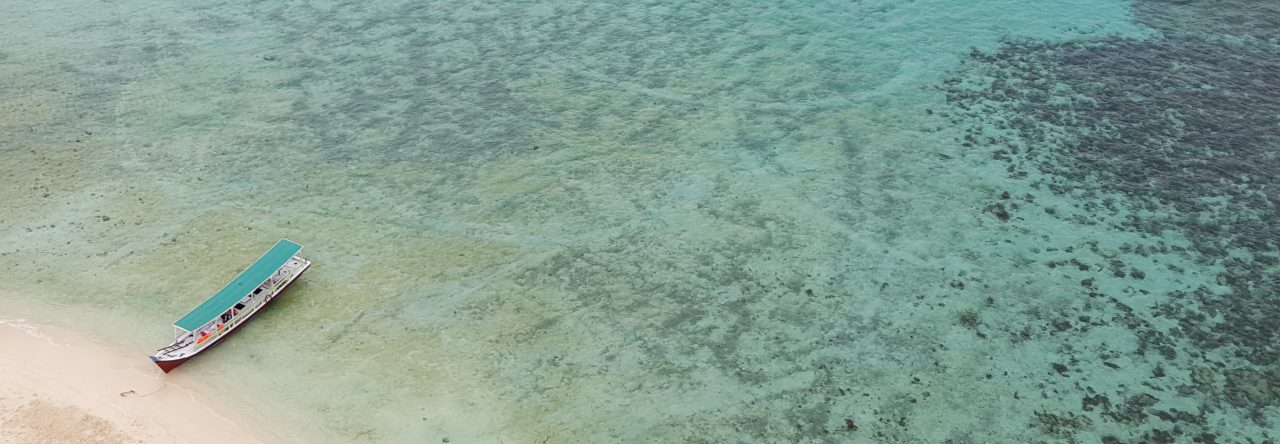ROAD to COPENHAGEN, The Jakarta Post, Fitrian Ardiansyah and Ari Muhammad , Jakarta | Tue, 10/13/2009 12:11 PM | Environment
Climate change is a grave threat to the economies, societies and natural environment of all countries in the Asia-Pacific region, including Indonesia.
Unless action is taken today to begin to stabilize and then reduce global greenhouse gas (GHG) emissions – action including achieving an ambitious global climate agreement at Copenhagen – the impacts of climate change will become increasingly severe and irreversible.
Climate change can lead to damage to natural, communal and business assets. Some studies typically place damage in the range 1-1.5 percent of gross domestic product (GDP) per year for developed countries, and 2-9 percent for developing countries, if the average temperature increases between 1.5 and 4.0 degrees Celsius.
In his 2006 review, Nicholas Stern extended this estimation by stating that unabated climate change could cost the world at least 5 percent of GDP each year; if more dramatic predictions come to pass, the cost could be more than 20 percent of GDP.
Overall in Indonesia, the observed and projected impacts of climate change include an increase in the severity of droughts, flooding, fires, coral bleaching, the gradual rise of sea levels, and the increase in frequency of extreme weather conditions including storms, which will be destroying natural and human-made systems in the area.
Increased rainfall during the wet seasons may lead to high floods, such as the Jakarta flood in February 2007 that inundated 70,000 houses, displaced 420,440 people and killed 69 with losses of US$450 million, according to the World Health Organization.
Hundreds of millions of people live in Indonesia, most of who depend on resources, goods and services for their livelihood. However, climate change will profoundly affect biodiversity, water resources and the economy in the country, all of which in turn will impact its people.
One study reveals that millions of people are at risk from flooding and sea-water intrusion caused by rising sea levels and declining dry-season precipitation; these phenomena will negatively impact the aquaculture industry (e.g., fish and prawn industries) and infrastructure along the coasts of South and Southeast Asia.
The impacts of climate change will increase the pressure on forest, coastal and marine ecosystems caused by illegal and destructive logging, overfishing and overexploitation of natural resources.
Hence, the challenge that the government faces is finding ways to devise climate-smart development strategies that ensure the mainstreaming of climate change adaptation in the country’s development agenda.
Adapting to climate change means adjusting natural or human systems in response to actual or expected climatic stimuli or their effects, which moderates harm or exploits beneficial opportunities.
This demands not only the improvement of national policies – which includes devising climate-smart strategies and mainstreaming these in the development agenda – but also the increase in workforce capacity from national to local levels. To begin with, this requires significant amounts of adequate, sufficient and sustainable financing.
To protect natural and business assets from climate change impacts, the World Bank estimates that $9-41 billion a year will be needed globally. The UN Framework Convention on Climate Change (UNFCCC) calculates the need for $49-171 billion a year – to adapt to climate change alone until 2030 – in which $28-67 billion is required to help efforts in developing countries.
Unfortunately, the current provision of funds to cope with these impacts is yet to be at a level sufficient to meet these requirements. The Special Climate Change Fund (SCCF) and the Least Developed Countries Fund (LDCF) have allocated only $114 million, and the Adaptation Fund, established last year, can accumulate and provide only around $200 million. Some even predict that in reality only $500 million can be gathered for climate change adaptation.
With this dismal figure, Indonesia also needs to seriously prepare its regional and domestic plans to adapt to climate change. Vulnerable sectors – agriculture, marine and coastal, forestry and infrastructure – and areas need to be assessed and prioritized.
Cooperation among countries at the regional level is essential and coordination among sectors and different levels of government is pivotal for successful adaptation initiatives.
At the regional level, for instance, the creation of the Coral Triangle Initiative (CTI) by six countries in the Asia Pacific is a good starting point for addressing climate adaptation in marine and coastal areas.
This initiative and its Regional Action Plan can complement individual countries’ actions to reduce the social, economic and biological impacts of climate change by developing adaptation policies and providing funding, especially for establishing and managing networks of marine protected areas and promotion of sustainable coastal livelihood.
Effective management of coastal resources through a range of options including locally managed regional networks of marine protected areas, protection of mangrove and seagrass beds and effective management of fisheries would contribute to a slower decline in coastal and marine resources as well as an increase in the resilience of coastal communities and the marine sector overall.
At the local level, encouraging news is coming out of Lombok. The provincial government of Nusa Tenggara Barat has carried out initial vulnerability assessment, predicting climate impacts and identifying areas and sectors most vulnerable to climate change.
It is a pioneering work because many climate predictions and assessments have been carried out at a global or regional level. The most important thing is that the results of this assessment were endorsed by the governor, and key elements of the findings are planned to be inserted in the mid-term development planning document of the province.
Reducing and coping with climate change impacts may be an endless struggle. However, some actions taken at the local, national and regional levels can further keep our hope alive to win this battle.
Fitrian is program director of climate & energy at WWF-Indonesia and adjunct lecturer at Paramadina Graduate School of Diplomacy. He can be reached at fardiansyah@wwf.or.id. Ari is adaptation policy coordinator at WWF-Indonesia. He can be reached at amuhammad@wwf.or.id.
Original Link:
http://www.thejakartapost.com/news/2009/10/13/dealing-with-climate-change-dangerous-impacts.html



